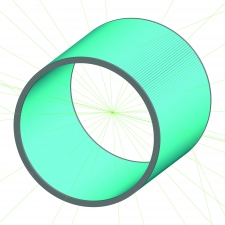J-PET has been presented in Cracow
01-10-2019
Today J-PET, a positron emission tomography scanner, designed and constructed in the Marian Smoluchowski Institute of Physics on the Jagiellonian University, has been presented in Cracow. The innovative device is much different from the traditional PET scanners. The use of polymer detectors, which are several times cheaper than the inorganic ones, in combination with a fully digital electronics, allows for construction of a modular and compact scanner. The unique way of collecting data about the place of coincidence based on the time of detection of photons emitted from the patient’s body, allows for utilizing completely new methods of body imaging based on multi-photon decays. So far, those types of decay have never been utilized for this purpose.
After years of work, it can be said, that this is a great success of the whole team of engineers, doctors and scientists. Employees of National Centre for Nuclear Research were among them.
„Świerk Computing Centre has developed a dedicated software for analysis and data simulation in J-PET” – explains Professor Wojciech Wiślicki, Director of the NCBJ Department of Complex Systems. „The simulations allowed us to evaluate the machine according to the NEMA standards (National Electrical Manufacturers Association) for diagnostic devices. ”
„Our team also created methods of signal reconstruction in the data acquisition system and reconstruction of the image of the patient’s body” – adds Wojciech Krzemień, PhD Eng. „The reconstruction is completed using three methods, which enables us to reach the image resolution better than 1 cm. ”
More about the project on the UJ website: http: //koza. if. uj. edu. pl/pet/





